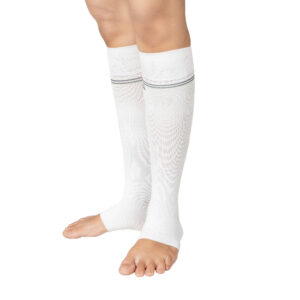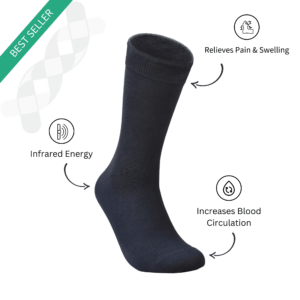Working out is good! We all need to work out and if you are reading this article, you already know that. The question is not ‘should we workout’, rather, ‘how should we workout’. Working out with diabetes has a few threats of its own and that is why many resign with their workout plans before they start to see any change. But fear not, if you do it right, there is nothing that can stop you from getting your optimum health.
Who Is At A Greater Risk?
So, we all know that those with diabetes need to be careful but who exactly needs to take precautions while working out?
You need to take precautions if:
- You are above 35 years old
- You have diabetes for more than 10 years
- You have heart problems or are predisposed to heart conditions because of genetic reasons
So, now that we know who needs to read this, here are some ways for a diabetic to be safe and have the best out of every workout session.
1. Talk To Your Doctor
If you plan to start a new workout session, you must clear it with your doctor. Be it anything, yoga, cardio, Zumba dance etc, if it’s something you never did before you need to clear it with your doctor.
They will guide you better on the meals you need to take and the timings and duration of each workout session. This way your body will be better equipped to handle change. This will help you make the best out of your workout sessions.
2. Hypoglycaemia Precautions
If you have severe diabetes, you have a higher risk of hypoglycemic shocks. Does that mean you can’t work out? Of course not! You can workout. Just that. You need to take precautions in case your blood sugar takes an all-time low.
Exercise burns glucose so, if you have type 1 diabetes you can reduce your insulin dose before your meals on workout days.
Always check your blood sugar before and after working out and keep an instant energy carbohydrate handy in case you get low blood sugar. Some like to carry a light juice with them, others prefer hard candy, glucose tablets or glucose gel. Avoid chocolate because it takes time to digest and enter your bloodstream.
To be on the safe side, you should keep a glucagon kit with you. Make sure to keep the box intact so that an amateur can read the instructions and administer the shot in case of an emergency.
3. Proper Footwear
Many diabetics have peripheral neurosis and sometimes exercise aggravates the condition on our feet. Stomping, jumping, running is great for your heart but not so great for your feet. So, you need to wear proper footwear to reduce the chances of infection and injuries.
If there is something you should invest in, it needs to be shoes – good fitting shoes. Remember that one pair of good shoes is not ideal for all kinds of workouts. Runners need shoes that support their ankles and sole while weight trainers need shoes that give them stability.
Apart from shoes, you need to take out time to find the right socks. You can wear diabetic socks to exercise as well. A good pair of diabetic socks cushion your feet, reduces friction, has seamless toes and is form-fitting. Smart diabetic socks are designed to heal your feet by conserving your body heat and improving blood circulation.
4. Warming Up
Those with diabetes are more prone to injury which is why you must warm-up before and after working out. It doesn’t matter if you are doing a light workout or an intense one, spend at least 5-10 minutes stretching your legs, arms, ankles.
Roll your joints clockwise then anticlockwise so that they are warm. Stretching after exercising helps you cool down gradually. This reduces the chances of injury and joint pain.
5. Monitor Your Sugar
If you are insulin-dependent, it is ideal to check your sugar before and after working out. It is okay if your sugar is on the higher range before working out. Exercise burns sugar so after working out, blood sugar should come back to the range.
If your sugar is already within the range you should be prepared with hypoglycaemia products. It’s better to be safe than sorry and glucose tablets/gel and a glucagon kit keeps you prepared for the worst.
6. Bring a Friend Along
There are many reasons why you should consider working out with a partner. Firstly, a friend/family member can help you out in case if you have low blood sugar. But having a friend allows you to enjoy the workout session.
You can also spot each other on weight days and expand your opportunities in the gym. Having a friend who knows about proper posture can, in fact, help you work out safely and get the best out of every session.
7. Inform Someone
In western countries, they issue a special health card for diabetics. This card explains your condition and what others must do in case you faint from low blood sugar. This card makes travelling easier for diabetics but it also helps in moments when you want to work out alone.
Unfortunately, we don’t have a similar system in India. Though you can ask your medical practitioner to issue a health card, it is not regarded with much value.
The best way to help yourself is to inform someone. You can inform a friend or a family where you are and how long you will take to come back home. Or, you can inform a person next to you in the gym. Tell them where you keep your hypoglycaemia products. Should you show symptoms of low blood sugar, they should be able to give them to you.
Working out and shedding a few kilos will make diabetes a lot more manageable but getting on the right foot is important to get the best out of your workout routine. We wish you all the best and we hope that your diabetes becomes more manageable in the years to come.




























